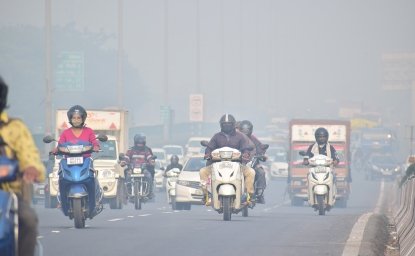
A blog of the Wilson Center

Of 20 cancer drugs considered essential by the independent not-for-profit group US Pharmacopeia, 14 have more than 40% of their production concentrated in a single facility.
America’s response to COVID-19 continues to be a politically charged topic, but few would dispute that it laid bare serious vulnerabilities in our health supply chains. And while the infectious disease itself may no longer be a pandemic, our public leaders are likely to focus on health supply processes, especially for life-saving medicines, for years to come.
US Pharmacopeia’s recent Medicine Supply Map suggests that production concentration has made some of our most important medicines vulnerable to supply chain shocks. Perhaps as a result, the Biden administration added pharmaceuticals and active pharmaceutical ingredients (API)—the chemicals that produce many of our medications—to its list of critical product sectors under the purview of the Supply Chain Disruptions Task Force. The US Department of Defense also recently identified drug shortages as a threat to military readiness.
More than 60% of our critical chemical supply for pharmaceuticals is sourced in just two countries—India and China; only 10% are produced in the United States. Earlier this year, a manufacturing plant in India responsible for a number of cancer-fighting drugs voluntarily shut down following FDA inspections that identified numerous manufacturing deficiencies. Damage from a hurricane caused disruptions to a manufacturing facility in North Carolina. Our over concentration of sourcing increases the chances that supplies could be significantly impacted by a single disruption, whether caused by humans or nature.
Distance itself is an additional supply chain risk. The necessary transportation of drugs and their critical ingredients produced in distant countries exposes them to a level of risk of disruption that domestic or proximately sourced products don’t have. And because many of them have vital human health importance, experts argue that the near-shoring push that government leaders have applied to other sectors makes even more sense in the pharmaceutical industry. Mexico, for example, already produces many medicines for its domestic consumption, a large portion of which are also exported. If the Biden administration were to incentivize pharmaceutical sourcing closer to home, it would motivate greater cooperation between the FDA and COFEPRIS, its Mexican counterpart.
For many years, American businesses prioritized lowest cost suppliers above nearly all else. The COVID-19 experience reminded us that when it comes to pharmaceuticals that can save and extend lives, and prevent the spread of dangerous diseases, reliability and availability are at least as important.
Author

Explore More in Stubborn Things
Browse Stubborn Things
Spying on Poachers

China and the Chocolate Factory

India: Economic Growth, Environmental Realities
